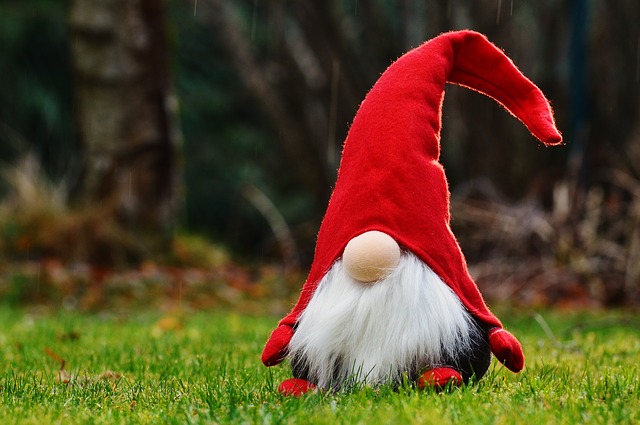Tomte: A Little Fairy from Nordic Folklore

In the ancient Nordic folklore, there are tales of a small fairy-like creature called Tomte. Tomtes are said to live in farmhouses’ attics and barns, taking care of the livestock and bringing happiness to the inhabitants as a guardian spirit. They are also popular as a substitute for Santa Claus in the Nordic region.
In this article, I will introduce the kind-hearted little fairy, Tomte, from Nordic folklore.
Tomte, a Beloved Guardian Spirit of Farmhouses?

Tomte is a small, adorable fairy with the appearance of a little person found in Nordic folklore. In the Nordic region, Tomtes are believed to reside in the attics and barns of old farmhouses, protecting the inhabitants of the house. They are known as hard workers, appearing at night to help with tasks such as cleaning the barn, taking care of horses, and guarding the farm as a night watchman.
In Sweden, many households have Tomte figurines as their guardian spirits. However, Tomtes are known to have a somewhat moody disposition. If angered, they may leave the house, play tricks, or even cause harm. It is said that if livestock or children are mistreated, the Tomte may become angry and steal items from the barn, or even attack the farmhouse.
Tomte’s Appearance Resembles Santa Claus
The kind-hearted but frightening-when-angry Tomte looks remarkably similar to the familiar figure of Santa Claus. In folklore, Tomtes are depicted as having a child-like stature, four fingers, and wearing gray or navy blue clothes. Most notably, they wear a bright red pointy hat and have a well-groomed beard.
Their appearance is akin to a miniaturized version of Santa Claus. Interestingly, the name and design of Tomtes vary slightly depending on the country or region in the Nordic area. “Tomte” is actually a Swedish word, while in Finland they are called “Tonttu,” and in Denmark and Norway, they are known as “Nisse.”

Their appearance can also differ significantly. For example, the image above shows a “Nisse” that is popular in Denmark and Norway. Nisse have round eyes and expressive faces. In fact, the appearance of a Nisse may be closer to the Santa Claus we commonly imagine. Regardless of the differences in names and appearances, these Nordic fairies have been cherished in folklore for their role in bringing happiness and prosperity to the families they protect.
I also have an article that goes into detail about the Finnish fairy Tonttu.

Rewarding Tomte on Christmas Eve
On the glowing red Christmas Eve, it is also a special event for Tomte, a reward for a year of hard work. In the Nordic region, it is customary to leave food on the table on Christmas Eve night as a token of appreciation for Tomte. This is so that Tomte can feast on it when the residents are asleep.
Milk porridge, a favorite of Tomtes, is particularly essential. This milk porridge, called “porridge,” is sweetened with sugar, butter, and milk.
A Tomte that can enjoy milk porridge and plenty of treats on Christmas Eve will be delighted. Having received their reward, Tomte will continue to work for the happiness of the residents even after Christmas. However, if you forget to prepare the milk porridge, you may incur Tomte’s wrath and suffer various pranks as retaliation.
While sweet porridge may be a surprise to Japanese people accustomed to salty porridge, in the Nordic region, this porridge is a common breakfast dish. It is often served with honey or blueberries, providing a familiar taste to Nordic people from childhood. In Finland, the milk porridge that Tomte loves is called “riisipuuro” and is traditionally eaten.

Christmas Jul Tomte

During the Christmas season, Tomte becomes the “Jul Tomte,” who goes around distributing presents to children. “Jul” means Christmas in Swedish. People dressed as Jul Tomtes hand out presents to children. Their attire closely resembles that of Santa Claus, with a white beard and red clothes. The main difference is that the Nordic Jul Tomte hands out presents directly and pulls their sleigh with a goat instead of reindeer.
Originally, Tomte was a creature born from Nordic folklore and had no direct connection to the Christian traditions of Christmas or Santa Claus. However, Sweden’s Christianization in the past and the import of Christmas culture from America in the 20th century led to the widespread modern custom of the Jul Tomte delivering presents at Christmas.
Conclusion
Tomte, the kind-hearted yet somewhat moody fairy of Nordic folklore, has its origins in long-standing oral traditions.
Even in modern times, Tomtes continue to be cherished by the people of the Nordic region.




